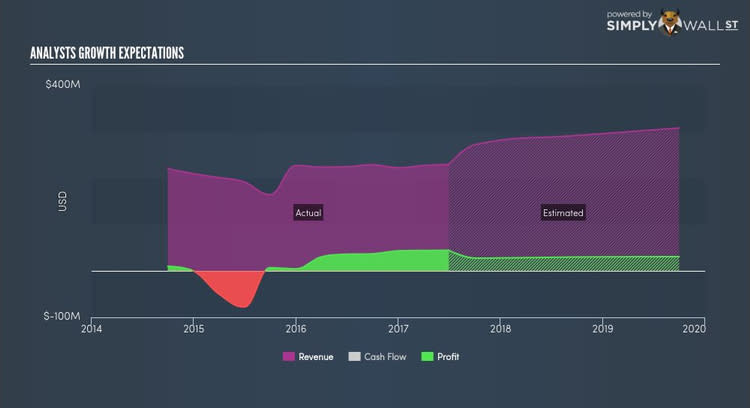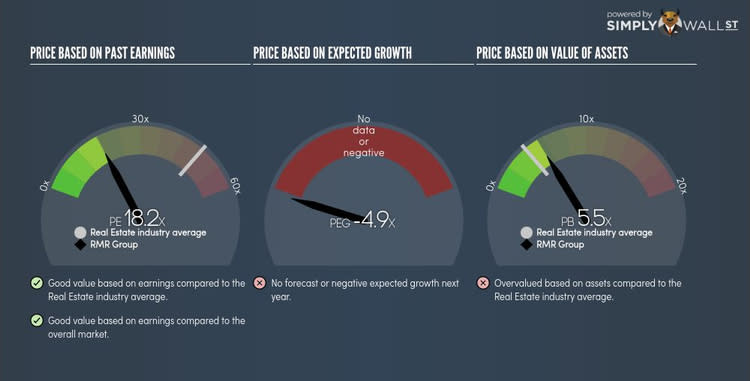Is The RMR Group Inc (RMR) A Real Estate Leader?

The RMR Group Inc (NASDAQ:RMR), a USD$1.57B small-cap, operates in the real estate industry which is the most prevalent industry in the global economy, and as an asset class, it has continued to play a crucial role in the portfolios of various investors. Real estate investments typically display unique and attractive investment characteristics relative to other stocks and bonds, especially over a long time horizon. Real estate analysts are forecasting for the entire industry, negative growth in the upcoming year, and a single-digit 7 percent growth over the next couple of years. This rate is below the growth rate of the Australian stock market as a whole. Is the real estate industry an attractive sector-play right now? Below, I will examine the sector growth prospects, as well as evaluate whether RMR is lagging or leading its competitors in the industry. View our latest analysis for RMR Group
What’s the catalyst for RMR's sector growth?
Over the past couple of years, as yields for high quality real estate investments have become under pressure, investors have swung towards more niche and diversified buildings such as medical offices, student housing and data storage facilities. Over the past year, the industry saw growth in the teens, beating the Australian market growth of 6 percent. RMR leads the pack with its impressive earnings growth of 23 percent over the past year. However, analysts are not expecting this industry-beating trend to continue, with future growth expected to be -4 percent compared to the wider real estate sector growth hovering next year. As a future industry laggard in growth, RMR may be a cheaper stock relative to its peers.
Is RMR and the sector relatively cheap?
The real estate sector's PE is currently hovering around 12 times, below the broader Australian stock market PE of 22 times. This means the industry, on average, is relatively undervalued compared to the wider market - a potential mispricing opportunity here! Though, the industry did returned a lower 13 percent compared to the market’s 16 percent, which may explain the lower relative valuation. On the stock-level, RMR is trading at a higher PE ratio of 18 times, making it more expensive than the average real estate stock. In terms of returns, RMR generated 43 percent in the past year, which is 30 percent over the real estate sector.
What this means for you:
Are you a shareholder? RMR is real estate industry laggard in terms of its future growth outlook. In addition to this, the stock is trading at a PE above its peers, meaning it is more expensive on a relative earnings basis. This may indicate it is the right time to sell out of the stock, if your initial investment thesis is around the growth prospects of RMR, since there are other real estate companies with higher growth prospects, possibly trading at a cheaper price as well.
Are you a potential investor? If RMR has been on your watchlist for a while, now may not be the best time to enter into the stock. Its growth is expected to be lower than its real estate peers in the near term, and it is also trading at a PE above these companies. If growth and mispricing are important aspects for your investment thesis, there may be better investments in the transportation sector.
For a deeper dive into RMR Group's stock, take a look at the company's latest free analysis report to find out more on its financial health and other fundamentals. Interested in other real estate stocks instead? Use our free playform to see my list of over 100 other real estate companies trading on the market.
To help readers see pass the short term volatility of the financial market, we aim to bring you a long-term focused research analysis purely driven by fundamental data. Note that our analysis does not factor in the latest price sensitive company announcements.
The author is an independent contributor and at the time of publication had no position in the stocks mentioned.


